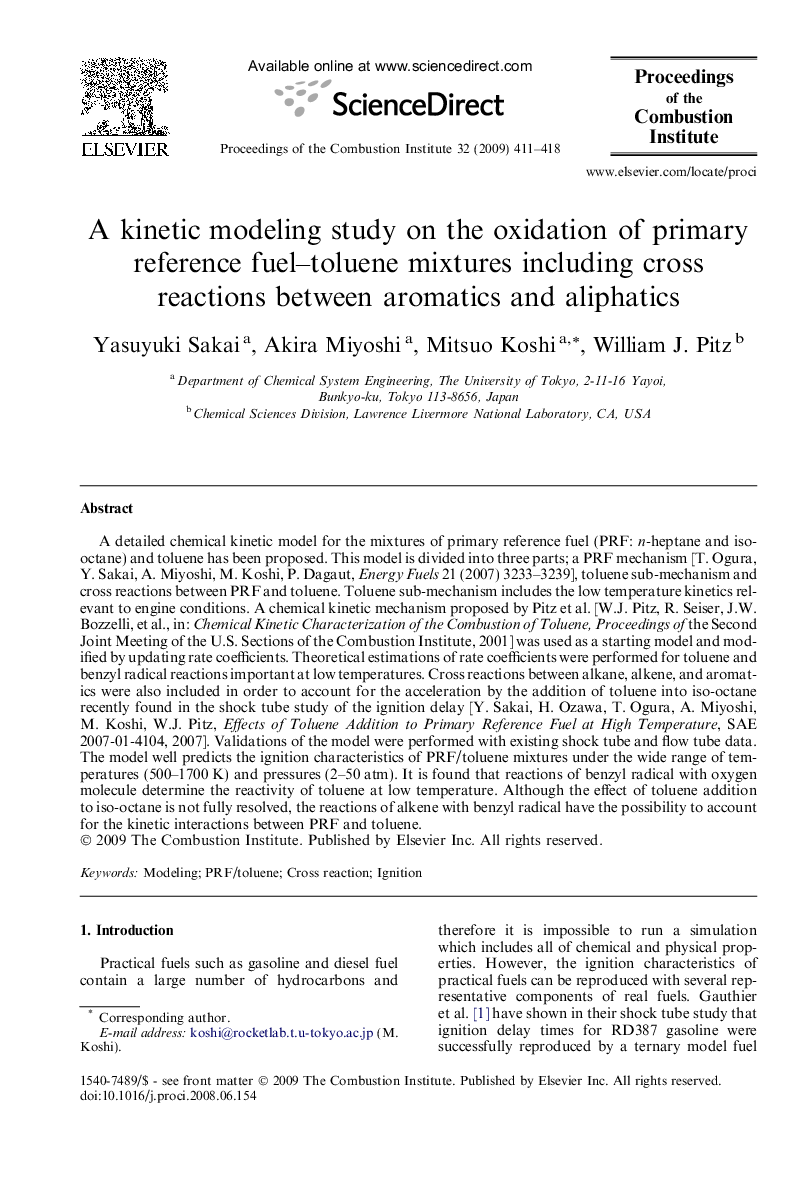| Article ID | Journal | Published Year | Pages | File Type |
|---|---|---|---|---|
| 6679431 | Proceedings of the Combustion Institute | 2009 | 8 Pages |
Abstract
A detailed chemical kinetic model for the mixtures of primary reference fuel (PRF: n-heptane and iso-octane) and toluene has been proposed. This model is divided into three parts; a PRF mechanism [T. Ogura, Y. Sakai, A. Miyoshi, M. Koshi, P. Dagaut, Energy Fuels 21 (2007) 3233-3239], toluene sub-mechanism and cross reactions between PRF and toluene. Toluene sub-mechanism includes the low temperature kinetics relevant to engine conditions. A chemical kinetic mechanism proposed by Pitz et al. [W.J. Pitz, R. Seiser, J.W. Bozzelli, et al., in: Chemical Kinetic Characterization of the Combustion of Toluene, Proceedings of the Second Joint Meeting of the U.S. Sections of the Combustion Institute, 2001] was used as a starting model and modified by updating rate coefficients. Theoretical estimations of rate coefficients were performed for toluene and benzyl radical reactions important at low temperatures. Cross reactions between alkane, alkene, and aromatics were also included in order to account for the acceleration by the addition of toluene into iso-octane recently found in the shock tube study of the ignition delay [Y. Sakai, H. Ozawa, T. Ogura, A. Miyoshi, M. Koshi, W.J. Pitz, Effects of Toluene Addition to Primary Reference Fuel at High Temperature, SAE 2007-01-4104, 2007]. Validations of the model were performed with existing shock tube and flow tube data. The model well predicts the ignition characteristics of PRF/toluene mixtures under the wide range of temperatures (500-1700Â K) and pressures (2-50Â atm). It is found that reactions of benzyl radical with oxygen molecule determine the reactivity of toluene at low temperature. Although the effect of toluene addition to iso-octane is not fully resolved, the reactions of alkene with benzyl radical have the possibility to account for the kinetic interactions between PRF and toluene.
Keywords
Related Topics
Physical Sciences and Engineering
Chemical Engineering
Chemical Engineering (General)
Authors
Yasuyuki Sakai, Akira Miyoshi, Mitsuo Koshi, William J. Pitz,
